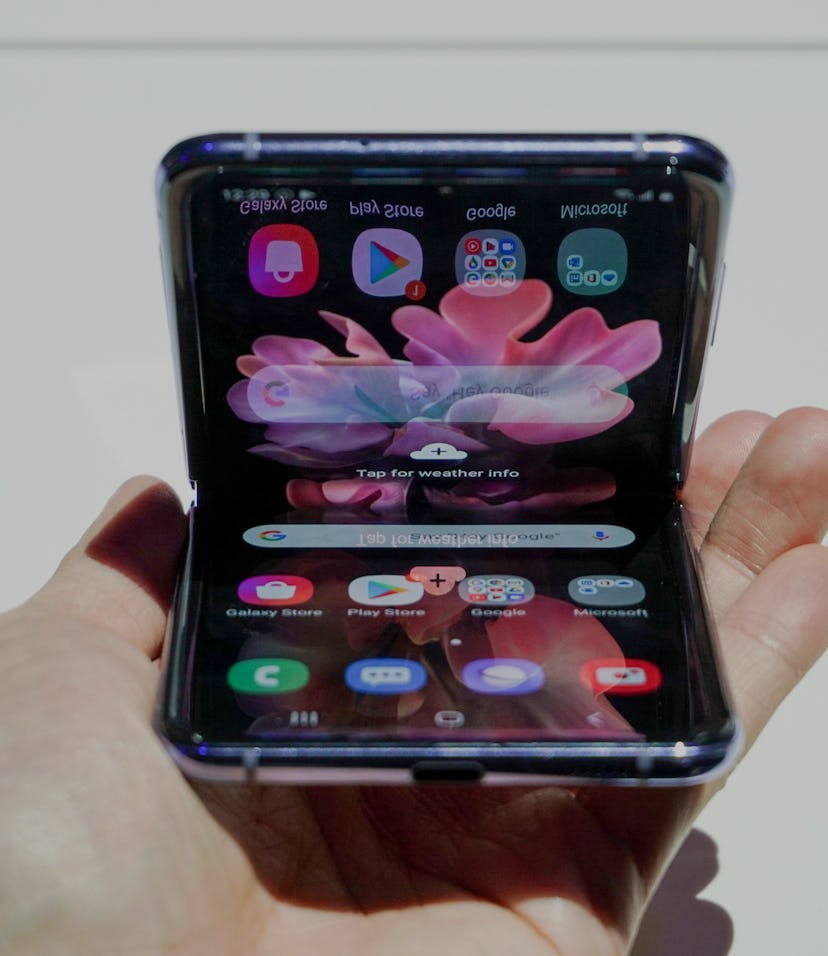Tech
Samsung Galaxy Z Flip hands-on: a turning point for foldable phones
It's the most promising foldable phone yet.

The best thing about Samsung’s Galaxy Z Flip is that it didn’t make scary creaking sounds when I folded and unfolded the clamshell smartphone.
The second best thing is that I couldn’t stick my fingernail and lift the foldable display at the point where it meets the hinge like I can on Motorola’s disappointing Razr.
Samsung’s second try at a foldable phone is significantly more polished than the Galaxy Fold. I don’t think it is The One that will make people toss their iPhones and Galaxy phones in the trash just yet. But I do think it’s a step in the right direction for foldables. Following Samsung’s Unpacked event in San Francisco, I got to spend about an hour in total with the Z Flip and I’m a little more optimistic about foldable phones.
Durability is the biggest concern for foldable phones and Samsung seems to have made it a top priority this time. The foldable glass “Infinity Flex Display” is the first of its kind and feels noticeably smoother when folded and unfolded. There were no warning screens on the phone telling me to be gentle when poking the display the way there is when you first set up the Galaxy Fold. Nor did any of the Samsung reps manning the hands-on devices tell me to baby the phone display.
Samsung says the Z Flip’s glass display can be folded 200,000 times before it breaks. In comparison, the Razr can only be folded 100,000 times.
It’s obvious to me there’s shared DNA between the Z Flip and Fold. The hinge is a similar design with the Samsung logo beveled into it. Inside, though, Samsung says it’s fortified it against dust and debris using special fibers. I don’t know how effective these fibers will be at keeping particles out of the phone, but it’s good to see Samsung’s taking durability seriously.
While it’s still thick — about the thickness of two phones — the Z Flip is a lot lighter than it looks. Mirror Purple and Mirror Gold are hot, but they’re crazy fingerprint magnets. There’s no way you’ll be able to keep the phone clean.
Let’s talk folding the Z Flip. Like I said, it’s smooth. However, it’s still fiddly. The phone folds perfectly in half like a Game Boy Advance SP, but that also makes hard to pry open with one hand. It’s easier to flip and unflip than the Razr, but there’s a high chance you’ll drop it. I almost dropped it several times trying to one-hand it.
Even so, I like the Z Flip! The tiny screen on the front is only for notifications and quick information like the time and missed calls. It’s just not goofy like the skinny outside screen on the Galaxy Fold that’s surrounded by comically thick bezels. It feels purposeful like the tiny cover screens on old flip phones.
The dual cameras on the cover are the correct lenses — a main camera and ultra-wide. The latter is way more useful than a telephoto. The selfie camera on the inside’s fine, too. I’d be surprised if they took worse photos than the Galaxy S10 cameras.
And yes, yes, yes, there’s a physical fingerprint sensor and no Bixby button.
My biggest concern, of course, is battery life. Samsung says it’s packed in a big 3,300 mAh battery, but I won’t know until I get one to test in the real world.
$1,380 doesn’t even seem outrageous for a foldable phone. It’s hundreds less than the $1,980 Galaxy Fold and just a little cheaper than the $1,500 Razr.
I need more personal time with the Z Flip to really know if it’s any good. But my first impression is: it looks and feels solid for a foldable. This might be a real turning point for foldable phones. I hope it is. I want foldable phones to succeed, but I'm not naive to the realities of the engineering challenges.